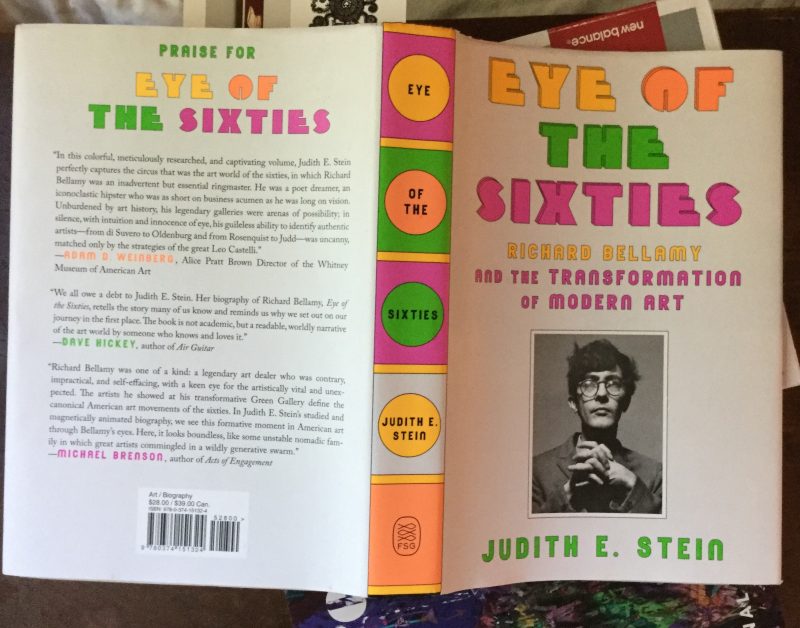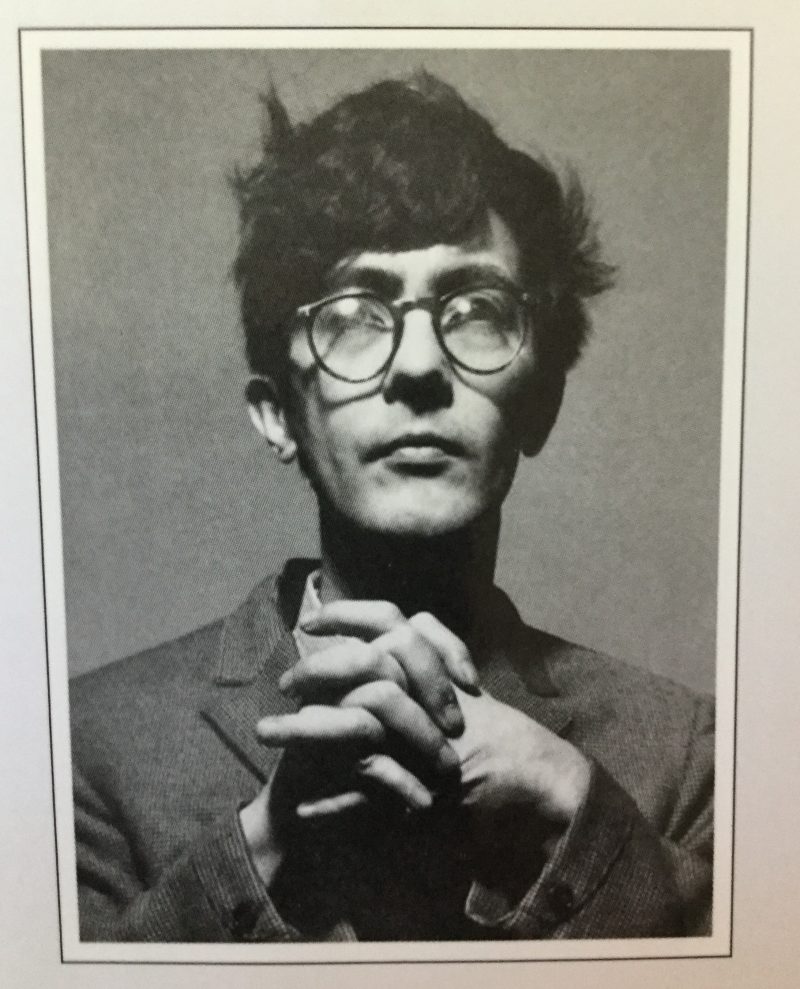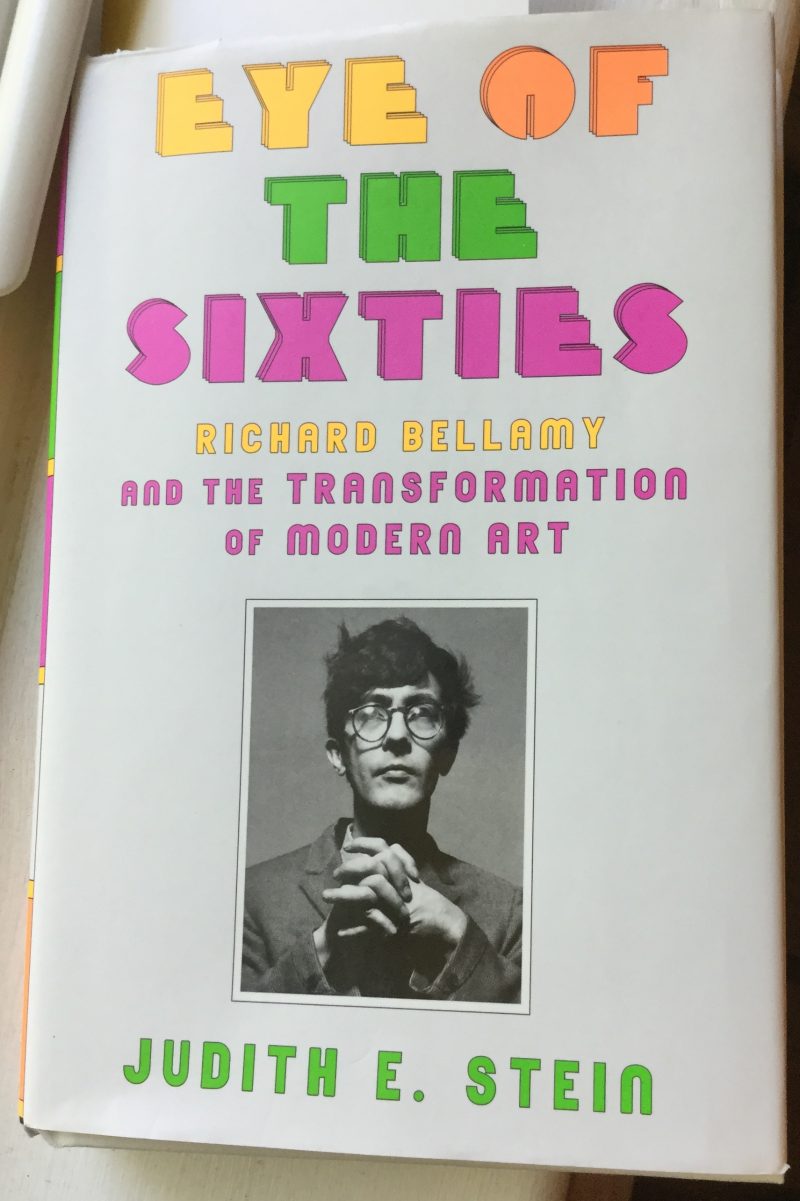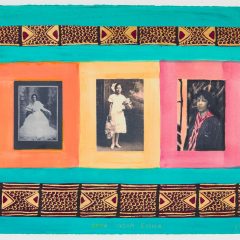With his uncanny eye and omnivore’s eclectic taste, Richard Bellamy championed those who are art stars now but were unknowns or art fledglings in the mid Twentieth Century. At a time when abstract expressionism was at its apex of scrutiny if not widespread popularity, Bellamy chose others who were working new territories — Mark Di Suvero, George Segal,Lucas Samaras, James Rosenquist and minimalists Donald Judd, Dan Flavin and Robert Morris. He participated in and hosted Alan Kaprow’s happenings and he befriended Yoko Ono. His gallery, Green, showed Andy Warhol’s paintings in 1962 even though, biographer Stein says, the gallerist was “highly suspicious” of the artist’s work. But the Green’s silent partner and funder, the collector Robert Scull, was a fan and collector of Warhol’s art and so Warhol’s work appeared.
“Eye of the Sixties” is a revelation of facts and names and dates with 62 pages of notes chronicling Judith Stein’s 20-years of research talking with and interviewing friends and colleagues of Dick Bellamy’s. She has compiled amazing detail about Bellamy, and yet the man remains elusive — to his friends, to her and now, to her readers. Bellamy was a reader of Proust and poetry, an alcoholic and sometimes angry drunk, an intuitive art lover and a lover of women, with whom he had stormy relationships. The guy behind the Coke bottle-thick glasses is the artist of his own legend, and like some of the art he loved, he was beautiful, interesting and more than a little inscrutable.
Read the book to know the story of Bellamy (someone whose name I did not know). But read it also for the sweeping arc of art history in those not too distant decades. For much of the book interleaves social dynamics at play with the story of art that was just then fresh — un-named as a movement — and untamed. In one example, the author telescopes art and society in the 50s into one paragraph — from Grandma Moses to Jackson Pollock, Elvis, Rosa Parks, Senator Joe McCarthy, Sputnik and beatniks, letting those auspicious names and words open your imagination to the era’s hurly burly.
Stein writes a rich, erudite prose style that sometimes winks at the reader knowingly. Speaking about two of the main couples in the story — Bellamy and his partner, Sheindi, and their friends/neighbors/sometime lovers, Sally and Teddy Gross, she says: “At a distance of more than 60 years the tangled interlace of the four lives is as hard to decipher as the border designs in the Book of Kells.” (P. 80)
Judith E. Stein is a Philadelphia-based art historian, curator, Pew Fellow (1994) and award-winning writer (Warhol/Creative Capital, 2008), who organized many exhibitions at Pennsylvania Academy of the Fine Arts when she was Contemporary Art Curator there (1981-1994). Stein is a powerhouse, and this book introduces her to a new generation of art lovers who will embrace her as a writer and her book as a needed addition to their bookshelves.
Upcoming book talks/signings for Judith Stein and “Eye of the Sixties”
Sep 10, 2016 — Book Signing at Main Point Books in Wayne, PA
Sep 14, 2016 — New York Public Library Panel Discussion
Sep 28, 2016 — Reading at the University of Pennsylvania Bookstore


[ED. Note: The audio previously in this post has been removed.]










